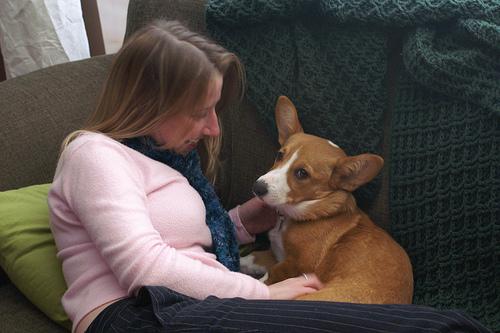原文:尚硅谷Vue3入门到实战,最新版vue3+TypeScript前端开发教程_哔哩哔哩_bilibili
1.环境安装
nodejs 验证命令node,有node 才有npm这个命令
npm 是 JavaScript 世界的包管理工具,并且是 Node.js 平台的默认包管理工具。通过 npm 可以安装、共享、分发代码,管理项目依赖关系。
npm 由三个独立的部分组成:
- 网站
- 注册表(registry)
- 命令行工具 (CLI)
- 01 - npm 是什么? | npm中文文档 | npm中文网
>npm create vue@latest
只是使用typescript

通过vscode打开目录
注意起重一定要有package.json文件,如果没有就另建项目重新npm create vue@latest
工程介绍
1).vscode-->extensions.json

.vscode存放从商店中拿到的插件
比如
Vue - Official(代替了volar)

2)env.d.ts
从node modules引入
如果没有则飘红
npm i
报错npm WARN saveError ENOENT: no such file or directory, open 'D:\src\ebook\package.json'
原因是没有package.json,需要重新运行项目或者考过来pacakge.json
之后会出现node_modules文件夹

vite网址Vite中文网
3)index.html
入口文件
入口文件不是main.js也不是main.ts
vite.config.ts:工程配置文件
3)main.ts
import './assets/main.css' //引入css文件
import { createApp } from 'vue' //类似于养花的花盆,创建应用
import App from './App.vue' //类似于养花的花根
createApp(App).mount('#app'):
createApp(App).把花插在花盆里 创建应用,每个应用都有个根组件
mount: 成果摆在#app里面
4)删掉src
vue文件三个标签
template script style
推荐使用
<script lang="ts">
</script>
2.setup
新配置项,里面不能用this,this是undefined,vue3弱化this
setup比beforecreate还在执行前面
返回对象
setup(){
// console.log("@@@@@@@@@@@@@@"+this) this是undefined
// 数据,直接用let不是响应式的,也就是变化不会引发页面自动更新
let name="杜甫";
let age=21;
let tel='123455'
// 方法
function changeName(){
console.log(1)
name='李白'
console.log(name)
}
function changeAge(){
console.log(2)
age+=1;
console.log(age)
}
function showTel(){
console.log(3)
alert(tel)
}
return{
name,age,changeAge,changeName,showTel
}
}上述返回的是对象
返回函数
return function(){
return 'haha'
}页面上直接出现

因为绝不会有this,改造成箭头函数
return ()=>{
return 'haha2'
}箭头函数在语法上比普通函数简洁多。箭头函数就是采用箭头=>来定义函数,省去关键字function。
函数的参数放在=>前面的括号中,函数体跟在=>后的花括号中
①如果箭头函数没有参数,写空括号
②如果箭头函数有一个参数,也可以省去包裹参数的括号
③如果箭头函数有多个参数,将参数依次用逗号(,)分隔,包裹在括号中。
箭头函数的函数体
①如果箭头函数的函数体只有一句执行代码,简单返回某个变量或者返回一个简单的js表达式,可以省去函数体花括号{ }及return
箭头函数没有原型prototype,因此箭头函数没有this指向
箭头函数没有自己的this指向,它会捕获自己定义 所处的外层执行环境,并且继承这个this值。箭头函数的this指向在被定义的时候就确定了,之后永远都不会改变。(!永远)
箭头函数进一步
return ()=>"haha3"
语法糖
可以不写setup 及里面的return
<script setup>
let a='666'
</script>
<script lang="ts" setup>
let a='666'
</script>一般vue3都有两个setup
一个用来定义名字,不然就等同文件名
另外一个写数据和方法
配置插件
为了支持把以上两个setup写在一起:
<script lang="ts" setup name="Person2">
let a='666'
</script>npm i vite-plugin-vue-setup-extend -D
更改vite.config.ts

之后重启就使用了<script lang="ts" setup name="Person2">

从输出来看 右侧数据被单独放在一块,其余放在一块

响应式数据
不同于vue2用data(){return{}} 里面的数据自动是响应式
ref:基本类型数据
引入ref,在需要变成响应式的前面加ref
<script lang="ts" setup name="Person">
import {ref} from 'vue'
let name=ref("libai");
let a='666';
console.log(name);
console.log(a);
function change(){
}
</script>从输出可以看到

打开,带下划线的都是系统自身用的

可见name是一个对象,使用时应该用name.value获取其值,但是
注意如下2个位置不同:template中不用写.value,自动添加

reactive:只能对象类型数据
let car=reactive({brand:'Benz',price:100})
没包裹叫原对象
包裹之后变为响应式对象

ref2:对象类型数据
<template>
<div>
{{ car.brand }}{{ car.city }}
<ul>
<li v-for="item in games" :key="item.id">
{{item.id }} {{item.name }}
</li>
</ul>
<button @click="changeBrand">更改品牌</button>
<button @click="changeName">更改游戏编号</button>
</div>
</template>
<script lang='ts' setup name="Person">
import {ref} from 'vue'
let car=ref({brand:'aodi',city:'shanghai'})
let games=ref([
{id:'a1',name:'王者'},
{id:'a2',name:'神探'},
{id:'a3',name:'日落'}])
function changeBrand(){
car.value.brand='宝马'
}
function changeName(){
games.value[0].id='a11'
}
</script>
<style scoped>
</style>
reactive和Ref
RefImpl都是由ref定义得来
Proxy都是由reactive得来

Ref遇到对象时用Reactive


避免ref后面.value每次都要写的设置
左下角齿轮-settings

选中 AutoInsertDotvalue
reactive所指元素被重新分配对象
失去响应式
以下function不能更改页面
let car=reactive({brand:'aodi',city:'shanghai'})
function changeCar(){
car={brand:'保时捷',city:'tianjin'}
}
但是以下是可以的
function changeCar(){
car.brand='a'
car.csity='gz'
}
解决方法1

to refs结构对象
左边相当于右面

修改为 let {name,age}=toRefs(person)
把reactive对象所定义的每一组key value变成ref对象


并且name就是person.name ,改变name同时也改变了person.name
toRef:只改变某个元素
let nl=toRef(person,'age')
console.log("nl"+nl.value)
3.计算属性
<input type="text"
单向属性 :value= 其实是v-bind:value
双向属性 v-model= 其 实是v-model:value
<template>
<div class="person">
姓:<input type="text" v-model="fName"> <br>
名:<input type="text" v-model="lName"> <br>
<button @click="changeFullName">将全名修改为li-four</button>
全名 <span>{{ fullName }}</span>
<!-- 全名 <span>{{ fullName2() }}</span>
全名 <span>{{ fullName2() }}</span> -->
</div>
</template>
<script lang="ts" setup name="Person">
import {ref,computed} from 'vue'
let fName=ref('zhang')
let lName=ref("big")
// 下面定义的fullName只读,不可修改
// let fullName=computed(()=>{
// // slice(0,1)截取从0开始到1的1个数据 ,slice(1) 截取从1到最后的所有数据
// return (fName.value.slice(0,1).toUpperCase()+fName.value.slice(1)+lName.value)
// })
// 下面定义的fullName 可读写
let fullName=computed(
{
get(){ return (fName.value.slice(0,1).toUpperCase()+fName.value.slice(1)+"-"+lName.value)},
set(val){
const [str1,str2]=val.split('-')
fName.value=str1
lName.value=str2
}
}
)
console.log(fullName)
function fullName2(){
console.log("function2")
return (fName.value.slice(0,1).toUpperCase()+fName.value.slice(1)+lName.value)
}
function changeFullName(){
fullName.value="li-si"
}
</script>
<style scoped>
.person{
background-color: cadetblue;
}
</style>
计算属性是有缓存的,发现其构成没变,则即使其它地方使用也不会再计算
方法则没有缓存 {{方法名()}}
如上定义计算属性是只读的

要想该则需要设置get set
set(val) 中的val就是fullname="li-si"中被赋予的值
let fullName=computed(
{
get(){ return (fName.value.slice(0,1).toUpperCase()+fName.value.slice(1)+"-"+lName.value)},
set(val){
const [str1,str2]=val.split('-')
fName.value=str1
lName.value=str2
}
}
)4.watch

watch在vue3是一个函数
watch(监视谁,回调函数)
监视基本类型
注意:监视sum不需要写.value
let sum=ref(0);
watch(sum,(newVal,oldVal)=>{
console.log("sum变化了"+newVal+"旧值"+oldVal)
})
结束监视
监视函数的返回值就是结束监视函数
import {ref,computed,watch} from 'vue'
let sum=ref(0);
function addOne(){
sum.value++
}
const stopWatch=watch(sum,(newVal,oldVal)=>{
console.log("sum变化了"+newVal+"旧值"+oldVal)
if(newVal>10){
stopWatch();
}
})
console.log(stopWatch)stopWatch就是

监视Ref定义的对象类型数据
监视对象地址值
若需监视对象值,需开启深度监视,使用监视函数第三个值
watch(person,(newVal,oldVal)=>{
console.log("Person被修改了"+newVal+"旧值"+oldVal)
},{deep:true})还可以加个immediate参数,一上来先执行,因为原来肯定是undefined
watch(person,(newVal,oldVal)=>{
console.log("Person被修改了"+newVal+"旧值"+oldVal)
},{deep:true,immediate:true})另外(newVal,oldVal)如果里面只写一个参数代表的是新值


监视Reatctive定义对象
默认开启深度监视,不能关闭
ref替换对象才是真正的替换,地址也变了,并且一直保持响应式

如果用reactive person={},会失去响应式;object.assign:是修改人的属性而已
监视对象类型的某个属性

对象属性是基本类型

<template>
<div>
姓名<h2>{{ person.name }}</h2><br>
年龄<h2>{{ person.age }}</h2><br>
车<h2>{{ person.car.c1 }},{{person.car.c2 }}</h2><br>
<button @click="changeName">修改名字</button>
<button @click="changeAge">修改年龄</button>
<button @click="changeFirstCar">修改第一台车</button>
<button @click="changeSecondCar">修改第二台车</button>
<button @click="changeCar">修改车</button>
</div>
</template>
<script lang="ts" setup name="Person">
import {reactive,watch} from 'vue'
let person=reactive({
name:"白居易",
age:18,
car:{
c1:'奔驰',
c2:'宝马'
}
})
function changeName(){
person.name="素食"
}
function changeAge(){
person.age++
}
function changeFirstCar(){
person.car.c1="保时捷"
}
function changeSecondCar(){
person.car.c2="法拉利"
}
function changeCar(){
// Object.assign(person.car,{c1:'蓝宇',c2:'比亚迪'})
person.car={c1:'蓝宇',c2:'比亚迪'}
}
watch(()=>{
return person.name
},(newVal,oldVal)=>{
console.log("发生变化了",newVal,oldVal)
})
</script>
<style scoped>
</style>上文中watch第一个值用了一个getter函数,简写为箭头函数,能返回一个值
以实现只监视一个属性

进一步简写为
watch(()=>person.name,(newVal,oldVal)=>{
console.log("发生变化了",newVal,oldVal)
})
对象属性是对象类型
watch(person.car,(newVal,oldVal)=>{
console.log("发生变化了",newVal,oldVal)
})上面的有缺陷:就是整个car变了没有被监视到
建议写全,监视的是地址值,属性变化监视不到
watch(()=>person.car,(newVal,oldVal)=>{
console.log("发生变化了",newVal,oldVal)
})需要开启deep
watch(()=>person.car,(newVal,oldVal)=>{
console.log("发生变化了",newVal,oldVal)
},{deep:true})监视多种值
watch([()=>person.name,()=>person.car.c1],(newVal,oldVal)=>{
console.log("发生变化了",newVal,oldVal)
},{deep:true})watch Effect
<template>
<div>
<h2>当前水温:{{ temp }}C</h2>
<h2>当前水位:{{ height }}M</h2>
<button @click="changeTemp">点我水温+1</button>
<button @click="changeHeight">点我水位+1</button>
</div>
</template>
<script lang="ts" setup name="Person">
import {ref,watch} from 'vue'
let temp=ref(20)
let height=ref(3)
function changeTemp(){
temp.value++
}
function changeHeight(){
height.value++
}
watch([temp,height],(newVal,oldVal)=>{
// 从newVal中获取新的温度和水位
let [newTemp,newHeight]=newVal
if(newTemp>=30||newHeight>=8){
console.log("alarm",newVal,oldVal)
}
})
</script>
<style scoped>
</style>改用watch effect,有immediate效果
因为被监视值就是定义的属性,
watchEffect(()=>{
if(temp.value>=30||height.value>=10){
console.log("hello")
}
})
标签REF
用Ref的原因,是因为如果使用id属性,那么不同vue文件可能重复使用
<h2 id="title2">深圳</h2>
console.log(document.getElementById('title2'))
输出为

对应改为ref2
<template>
<div>
<h1>中国</h1>
<!-- 把深圳放在名称为title2的容器里 -->
<h2 ref="title2">深圳</h2>
<h3>龙华</h3>
<button @click="showLog">点我输出h2</button>
</div>
</template>
<script lang="ts" setup name="Person">
import{ref} from 'vue'
// 创建一个title2,用于存储ref2标记的内容
let title2=ref()
function showLog(){
// console.log(document.getElementById('title2'))
console.log(title2.value)
}
</script>
<style scoped>
</style>有的时候会输出,标签中会有 data-v-4cadc14e,这是局部样式导致的,去掉scoped就没有了

<template>
<div class="person">
<h1>中国</h1>
<!-- 把深圳放在名称为title2的容器里 -->
<h2 >深圳</h2>
<h3 ref="title2">龙华</h3>
<button @click="showLog">点我输出h2</button>
</div>
</template>
<script lang="ts" setup name="Person">
import{ref} from 'vue'
// 创建一个title2,用于存储ref2标记的内容
let title2=ref()
function showLog(){
// console.log(document.getElementById('title2'))
console.log(title2.value)
}
</script>
<style scoped>
.person{
background-color: cadetblue;
}
</style>REF在组件
Ref都是加在普通的html标签上而不是组件标签
如果给组件加,比如
<template>
<h2 ref="title2">ok</h2>
<button @click="outPrint">点我输出</button>
<Person ref="ren"/>
</template>
<script lang="ts" setup name="App">
import Person from './components/Person.vue'
import {ref} from 'vue'
let title2=ref()
let ren=ref()
function outPrint(){
// console.log(title2.value)
console.log(ren.value)
}
// export default{
// name:'App',
// components:{Person}
// }
</script>输出ref是组件的实例对象,但是什么具体值也看不到,原因是被本vue文件作为父级保护起来,这与Vue2不同,在Vue2中父级是可以看到所有子级的

如果要显示,则需要去组件中添加
import{ref,defineExpose} from 'vue
defineExpose({a,b,c})
<template>
<div class="person">
<h1>中国</h1>
<!-- 把深圳放在名称为title2的容器里 -->
<h2 >深圳</h2>
<h3 ref="title2">龙华</h3>
<button @click="showLog">点我输出h2</button>
</div>
</template>
<script lang="ts" setup name="Person">
import{ref,defineExpose} from 'vue'
// 创建一个title2,用于存储ref2标记的内容
let title2=ref()
let a=ref(0)
let b=ref(1)
let c=ref(2)
function showLog(){
// console.log(document.getElementById('title2'))
console.log(title2.value)
}
defineExpose({a,b,c})
</script>
<style scoped>
.person{
background-color: cadetblue;
}
</style>
总结
ref可以定义在html普通标签,拿到的是元素
也可以定义在组件上,拿到的是组件实例,能看到哪些元素取决于组件本身的expose
TS
约束定义
1)在src下新建types文件夹,下面新建index.ts
// 定义一个接口对象,用于限制person对象的具体数值
export interface PersonInter{
id:string,
name:string,
age:number
}
// export type Persons=Array<PersonInter>
export type Persons=PersonInter[]上面定义的是对象
下面定义了数组,引用了对象,有两种定义方法,一种用泛型,另外一种用[]
约束使用
先引入
然后用冒号
<template>
<div class="person">
???
</div>
</template>
<script lang="ts" setup name="Person">
// import的是个约束,不是具体值,所以无法打印
import {type PersonInter,type Persons} from '@/types'
//下文的意思是person要符合接口规范,包括变量名称
let person:PersonInter={id:'001',name:'李白',age:22}
//下文的意思是person数组泛型要符合接口规范,包括变量名称
// let persons:Array<PersonInter>=[
let persons:Persons=[
{id:'001',name:'李白',age:22},
{id:'002',name:'杜甫',age:32}
{id:'003',name:'白居易',age:36}
]
</script>
<style scoped>
.person{
background-color: cadetblue;
}
</style>Props
1. 属性中冒号
<h2 a="1+1" :b="1+1" c="x" :d="x" ></h2> let x=99
有了冒号代表取变量或者本身就是表达式,结果如下

2.给子组件传值
<Person a="haha" b="ss" :list="personList"/>
子组件接收:注意子组件里面的let x把所有的defineProps里面的值都保存了起来
<script lang="ts" setup name="Person">
import {defineProps} from 'vue'
// 接收a
// defineProps(['a','b'])
//接收a并且保存起来
let x=defineProps(['a','b','list'])
console.log(x.a)
console.log(x)
</script>v-for
<Person a="haha" b="ss" :list="personList"/>如果写为 <Person a="haha" b="ss" :list="5"/>
:list="5" 子组件显示会展示5次

v-for的key主要是为了更新,作为索引;如果不指定key,则用数据下标0,1,2等为索引,容易混乱
<li v-for="item in list" :key="item.id"> persons也可以用具体数字
如果v-for对应list为空,则直接不显示
可有可无的属性
参见x后的?
export interface PersonInterface{
id:string,
name:string,
age:number,
x?: number
}
export type Persons=PersonInterface[]优雅泛型
参加reactive后面的<Persons>取代了PersonList:Persons
let PersonList=reactive<Persons> ([
{id:'001',name:'李白',age:22},
{id:'002',name:'杜甫',age:23},
{id:'003',name:'白居易',age:24},
{id:'004',name:'苏轼',age:25},
])
</script>接收并限制类型
子组件接收时检查类型
<template>
<div>
<ul>
<li v-for="item in list" :key="item.id">
{{item.id}}---{{item.name}}---{{ item.age }}
</li>
</ul>
</div>
</template>
<script lang="ts" setup name="Person">
import{defineProps,withDefaults} from 'vue'
import {type Persons} from '../types'
// 定义需要手动父组件传递过来的的属性名称,同时必须类型符合
// defineProps<{list:Persons}>()
// 接收list+限制类型 +限制必要性+默认值
withDefaults(defineProps<{list?:Persons}>(),{
//
list:()=>[{id:'008',name:'王麻子',age:99}]
}
)
</script>
<style scoped>
</style>宏函数
define定义的函数比如defineProps等,vue3默认引入,不会报错
生命周期
也叫生命周期函数,钩子
组件:创建 挂载 更新 销毁
created mounted
vue2声明周期
全局安装
npm install -g @vue/cli查看vue版本 vue -V
创建 vue create vue2test
创建 前 before 后
挂载
更新
销毁
<template>
<div>
<h2>当前求和为{{sum}}</h2>
<button @click="addSum">点我sum+1</button>
</div>
</template>
<script>
export default{
/* eslint-disable */
name:'Person',
data(){
return{
sum : 1,
}
},
methods:{
addSum(){
this.sum++;
}
},
// 顺序不重要,何时调vue决定
// 创建:比如人怀孕
beforeCreate() {
console.log("创建前");
},
created(){
console.log("创建完毕")
},
// 挂载:出生
beforeMount() {
console.log("没有挂载")
// debugger //停在这里
},
mounted(){
console.log("挂载完毕")
},
//更新,多次
beforeUpdate(){
console.log("更新前")
},
updated() {
console.log("更新完毕")
},
//销毁前
beforeDestroy(){
console.log("销毁前")
},
destroyed(){
console.log("销毁完毕")
}
}
</script>vue3声明周期
1.子先挂载

1.子先挂载,App这个组件最后挂载
2.vue2与vue3生命周期对比

3.vue3
<template>
<div>
<h2>{{ sum }}</h2>
<button @click="addSum">点我加1</button>
</div>
</template>
<script lang="ts" setup name="Person">
import { ref,onBeforeMount,onMounted,onBeforeUpdate,onUpdated,onBeforeUnmount,onUnmounted} from 'vue';
let sum=ref(0)
function addSum(){
sum.value++
}
// setup 相当于befeforeCreate和created
console.log("创建完了")
//挂载需要引入onBeforeMounted
onBeforeMount(()=>{
console.log("挂载前")
})
//挂载完引入onMounted
onMounted(()=>{
console.log("子---挂载完毕")
})
//更新前
onUpdated(()=>{
console.log("更新前")
})
//更新后
onUpdated(()=>{
console.log("更新后")
})
//卸载前
onBeforeUnmount(()=>{
console.log("卸载前")
})
//卸载后
onUnmounted(()=>{
console.log("卸载后")
})
</script>
<style scoped>
</style>axios
npm i axios
获取狗的图片
https://dog.ceo/api/breed/pembroke/images/random
后端服务器返回的一定是对象,里面有很多key value
{data: {...}, status: 200, statusText: '', headers: AxiosHeaders, config: {...}, ...}
找到需要要的key
hooks
<template>
<div>
<h2>{{ sum }}</h2>
<button @click="addSum">点我加1</button>
<hr>
<img v-for="(dog,index) in dogList" :src="dog" :key="index" />
<button @click="moreDog">再来一只狗</button>
</div>
</template>
<script lang="ts" setup name="App">
import { ref,reactive } from 'vue';
import axios from 'axios'
let sum=ref(0);
function addSum(){
sum.value++;
}
let dogList=reactive([
"https://images.dog.ceo/breeds/pembroke/n02113023_3927.jpg",
"https://images.dog.ceo/breeds/pembroke/n02113023_1659.jpg"
])
async function moreDog(){
try{let result= await axios.get('https://dog.ceo/api/breed/pembroke/images/random')
dogList.push(result.data.message)}catch(error){
console.log(error)
}
}
</script>
<style scoped>
img{
height: 200px;
margin-right: 10px;
}
</style>:把相关的数据和方法写在一起,有点像vue2 mixin
step1:
src下新建hooks文件夹
本质就是xx.ts或xx.js
命名规范 useXXX
step2:
定义bing暴露
useDog.ts
import { reactive } from 'vue';
import axios from 'axios'
//export default后面直接跟值比如export default '1',所以也可以跟一个匿名函数,如果没有default则必须命名
export default function(){
let dogList=reactive([
"https://images.dog.ceo/breeds/pembroke/n02113023_3927.jpg",
"https://images.dog.ceo/breeds/pembroke/n02113023_1659.jpg"
])
async function getDog(){
try{let result= await axios.get('https://dog.ceo/api/breed/pembroke/images/random')
dogList.push(result.data.message)}catch(error){
console.log(error)
}
}
// 向外部提供东西,可以提供对象
return {dogList,getDog}
}useSum.ts
import { ref ,onMounted,computed} from 'vue';
export default function(){
let sum=ref(0);
let bigSum=computed(()=>{
return sum.value*10
})
function addSum(){
sum.value++;
}
onMounted(()=>{
addSum()
})
return {sum,addSum,bigSum}
}stpe3
引入 接收 使用
<template>
<div>
<h2>{{ sum }} 放大10倍后{{ bigSum }}</h2>
<button @click="addSum">点我加1</button>
<hr>
<img v-for="(dog,index) in dogList" :src="dog" :key="index" />
<button @click="getDog">再来一只狗</button>
</div>
</template>
<script lang="ts" setup name="App">
import useDog from '@/hooks/useDog'
import useSum from '@/hooks/useSum'
const {dogList,getDog}=useDog()
const {sum,addSum,bigSum}=useSum()
</script>
<style scoped>
img{
height: 200px;
margin-right: 10px;
}
</style>
前端路由

因为是单页面应用所以需要路由
当点击左侧导航,触发路径变化
路径变化被路由器捕获到,加载对应组件

点击另外一个目录时,卸载原来的组件,挂载新的组件

路由设置
1)确定页面导航区,展示区
2)请来路由器
安装路由器 npm i vue-router
src下建立router文件夹 建立 index.ts

3)制定路由的具体规则(什么路径,对应什么组件)
// 创建一个路由器bing暴露出去
// 1.1引入createRouter
import { createRouter ,createWebHistory} from "vue-router";
// 1.2引入要呈现的组件 ,一开始飘红需要关掉vscode重新打开,主要是不认vue3
import Home from '@/components/Home.vue'
import News from '@/components/News.vue'
import About from '@/components/About.vue'
// 2.创建路由器
const router=createRouter({
history:createWebHistory(),//确定工作模式
routes:[ //一个一个的路由规则
{
path:'/home',component:Home
},
{
path:'/news',component:News
},
{
path:'/about',component:About
}
]
})
// 3.暴露
export default router
//4.要去main.ts引入路由器4)main.ts中引入路由
import { createApp } from "vue"
import App from './App.vue'
// 路由4:引入路由器
import router from "./router"
// 创建一个应用
const app=createApp(App)
// 使用路由器
app.use(router)
// 挂载整个应用
app.mount('#app')当有个app.use(router)之后,就可以看到控制台多了Routes

这时候在地址栏加比如/news 就会被router监控到,但是还不知道展示在哪里
5)展示位置
import { RouterView } from 'vue-router';
<RouterView></RouterView>
6)增加切换支持
import { RouterView,RouterLink} from 'vue-router';
<div class="navigate">
<RouterLink to="/home" class="active">首页</RouterLink>
<RouterLink to="/news">新闻</RouterLink>
<RouterLink to="/about">关于</RouterLink>
</div >7)选中高亮
<template>
<div class="app">
<h2 class="title">Vue 路由测试</h2>
<!-- 导航区 -->
<div class="navigate">
<RouterLink to="/home" active-class="active">首页</RouterLink>
<RouterLink to="/news" active-class="active">新闻</RouterLink>
<RouterLink to="/about" active-class="active">关于</RouterLink>
</div >
<!-- 展示区 -->
<div class="main-content">
<RouterView></RouterView>
</div>
</div>
</template>
<script lang="ts" setup name="App">
import { RouterView,RouterLink} from 'vue-router';
</script>
<style scoped>
/* app */
.title{
text-align: center;
word-spacing: 5px;
margin: 30px 0;
height: 70px;
line-height: 70px;
background-image: linear-gradient(45deg,gray,white);
border-radius: 10px;
box-shadow: 0 0 2px;
font-size: 30px;
}
.navigate{
display: flex;
justify-content: space-around;
margin: 0 100px;
}
.navigate a{
display: block;
text-align: center;
width: 90px;
height: 40px;
line-height: 40px;
border-radius: 10px;
background-color: gray;
text-decoration: none;
color: white;
font-size: 18px;
letter-spacing: 5px;
}
.navigate a.active{
background-color: #64967E;
color: #ffc268;
font-weight: 900;
text-shadow: 0 0 1px black;
font-family: 微软雅黑;
}
.main-content{
margin: 0 auto;
margin-top: 30px;
border-radius: 10px;
width: 90%;
height: 400px;
border: 1px solid;
}
</style>注意

路由组件:就是通过路由引入进来的
一般组件:通过import进来的,页面上要写<组件名/>
视觉小时了组件是被卸载了
路由工作模式
history
vue2 mode:'history'
vue3: history:createWebHistory()


hash

路由to的两种写法
1.字符串写法
<RouterLink to="/news/detail?a=哈哈&b=呃呃">{{item.title}}</RouterLink>
2.对象写法1
<RouterLink :to="{path:'/about'}" active-class="active">关于</RouterLink>
3.对象写法2
<RouterLink :to="{name:'xinwen'}" active-class="active">新闻</RouterLink>
参见命名路由
命名路由
增加了name
routes:[ //一个一个的路由规则
{
name:'zhueye',
path:'/home',
component:Home
},
{
name:'xinwen',
path:'/news',component:News
},
{ name:'guanyu',
path:'/about',component:About
}
]嵌套路由
Vue Router warn\]: No match found for location with path "/" 没有/的路由[http://localhost:5173/](http://localhost:5173/ "http://localhost:5173/")
先引入
routes:[ //一个一个的路由规则
{
name:'zhueye',
path:'/home',
component:Home
},
{
name:'xinwen',
path:'/news',component:News,
children:[
{
path:'detail',
component:Details
}
]
},
{ name:'guanyu',
path:'/about',component:About
}
]
})
import {useRoute} from 'vue-router'
let route=useRoute()
console.log(route)
传递的参数在route对象的Target里面的query参数

第一种写法
\
#### params
三个注意
1)在路由注册了参数,才能使用,并且不能缺
除非在路由参数加? path:'detail/:id/:title/:content?',
2)router link对象写法中必须使用路由name
3)router link对象写法中参数值不能是数组,对象
在路由后面不写?直接继续写/,也不用键值对
下面红色是路由,绿色是参数

父组件
如下写法必须使用name
#### 第二种写法
可以用于query
自己决定将什么作为路由组件传给props
#### 第三种写法
对象写法,但是是写死了,很少用

### replace
路由跳转时,会操作浏览器历史记录,默认是push
push:
相当于浏览器历史记录是个栈,有个指针

replace
替换
在导航区routelink上加replace

当前求和为{{ sum }}
当前求和为{{ countStore.sum }}
欢迎来到{{ countStore.school }}坐落于{{ countStore.address }}
当前求和为{{ countStore.sum }}
欢迎来到{{ countStore.school }}坐落于{{ countStore.address }}
当前求和为{{ sum }}
欢迎来到{{ countStore.school }}坐落于{{ countStore.address }}
当前求和为{{ sum }}
欢迎来到{{ school }}坐落于{{ address }}
当前求和为{{ sum }},放大10倍后{{ bigSum }}
欢迎来到{{ school }},坐落于{{ address }} 大写{{ upperSchool }}
父组件
汽车{{ car }}
子给的 {{ toy }}
子组件
{{ toy }}
父亲给的车:{{ car }}
父组件
- {{ item.id }} {{ item.name }}
- {{ item.id }} {{ item.name }}
{{ item.id }} {{ item.name }}
游戏列表
求和为{{ sum }}
名字为{{ person.name }}
年龄为{{ person.age}}
求和为{{ sum }}
名字为{{ person.name }}
年龄为{{ person.age}}
汽车为{{ car}}
sum为{{ sum }}
sum2为{{ sum2 }}
当前(car1)汽车为{{ car }}
当前(car2)汽车为{{ car2 }}
{{ msg }}
{{ msg }}
我是APP组件

我是弹窗标题
我是弹窗内容